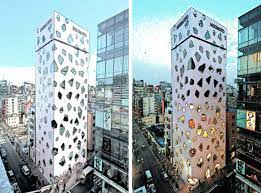Buildings serve as prominent symbols of human creativity and architectural ingenuity. Throughout history, architects and designers have employed various styles and aesthetics to create structures that reflect cultural, societal, and technological influences. This article delves into the diverse array of building looks, highlighting some of the most significant architectural styles that have shaped our built environment. From the classical grandeur of ancient civilizations to the sleek lines of modernism, each architectural aesthetic offers a unique perspective on design, construction techniques, and the human experience within these spaces.
Ancient and Classical Architecture
Ancient and classical architecture encompasses the architectural styles prevalent in civilizations such as Ancient Greece, Rome, and Egypt. These structures showcase a focus on balance, harmony, and symmetry. Greek architecture, with its iconic Doric, Ionic, and Corinthian orders, emphasized simplicity, proportion, and grace. Roman architecture, renowned for its colossal edifices such as the Colosseum and Pantheon, skillfully integrated arches, domes, and vaults, showcasing sophisticated engineering methodologies. Egyptian architecture featured grandiose structures like the pyramids, characterized by colossal columns, intricate carvings, and religious symbolism. These architectural styles continue to inspire and influence modern building design, lending a timeless elegance to the urban landscape.
Gothic Architecture
Gothic buildings are known for their pointed arches, ribbed vaults, and towering spires. Cathedrals such as Notre-Dame in Paris and Canterbury Cathedral exemplify this style, featuring intricate stained glass windows, flying buttresses, and ornate sculptural details. Gothic architecture aimed to evoke a sense of awe and transcendence, with verticality and light playing crucial roles. These buildings symbolized the spiritual and intellectual aspirations of the medieval period and continue to captivate visitors with their breathtaking beauty.
Renaissance and Baroque Architecture
The Renaissance period marked a revival of classical influences and a shift towards humanism. Buildings during this era sought to reflect the ideals of symmetry, proportion, and mathematical precision. Renaissance architecture, as seen in the works of architects like Brunelleschi and Palladio, emphasized harmonious proportions, domes, and colonnades. The Baroque period that followed celebrated exuberance and splendor. Noteworthy examples comprise the Palace of Versailles in France and St. Peter’s Basilica in Rome. Baroque buildings featured elaborate ornamentation, dynamic forms, and theatrical effects, intended to evoke strong emotional responses. These architectural styles embodied the cultural and artistic rebirth of Europe, leaving an indelible mark on the built environment.
Modernist and Contemporary Architecture
There was a significant departure from conventional architectural styles, leading to the emergence of modernist and contemporary designs. Modernism rejected excessive ornamentation and embraced simplicity, functionalism, and the innovative use of materials like steel and glass. Architects such as Le Corbusier and Frank Lloyd Wright championed this movement, designing buildings that merged form and function. The International Style, exemplified by the Bauhaus School, emphasized clean lines, open spaces, and geometric shapes. In contrast, contemporary architecture encompasses a diverse range of styles and approaches, skillfully capturing the multifaceted essence of the modern world. From avant-garde designs to sustainable architecture, contemporary buildings strive to address social, environmental, and technological challenges.
Conclusion
The development of architectural aesthetics has been significantly influenced by historical events, cultural contexts, and technological advancements. Each architectural style explored in this article offers a unique visual language and a distinct narrative of human creativity. From the classical elegance of ancient civilizations to the soaring Gothic cathedrals, and from the symmetrical beauty of Renaissance buildings to the innovative designs of the modernist and contemporary eras, architecture has continually evolved to meet the needs and aspirations of societies. By appreciating and understanding these diverse building looks, we gain insight into the rich tapestry of human ingenuity and the profound impact of architecture on our lives.



